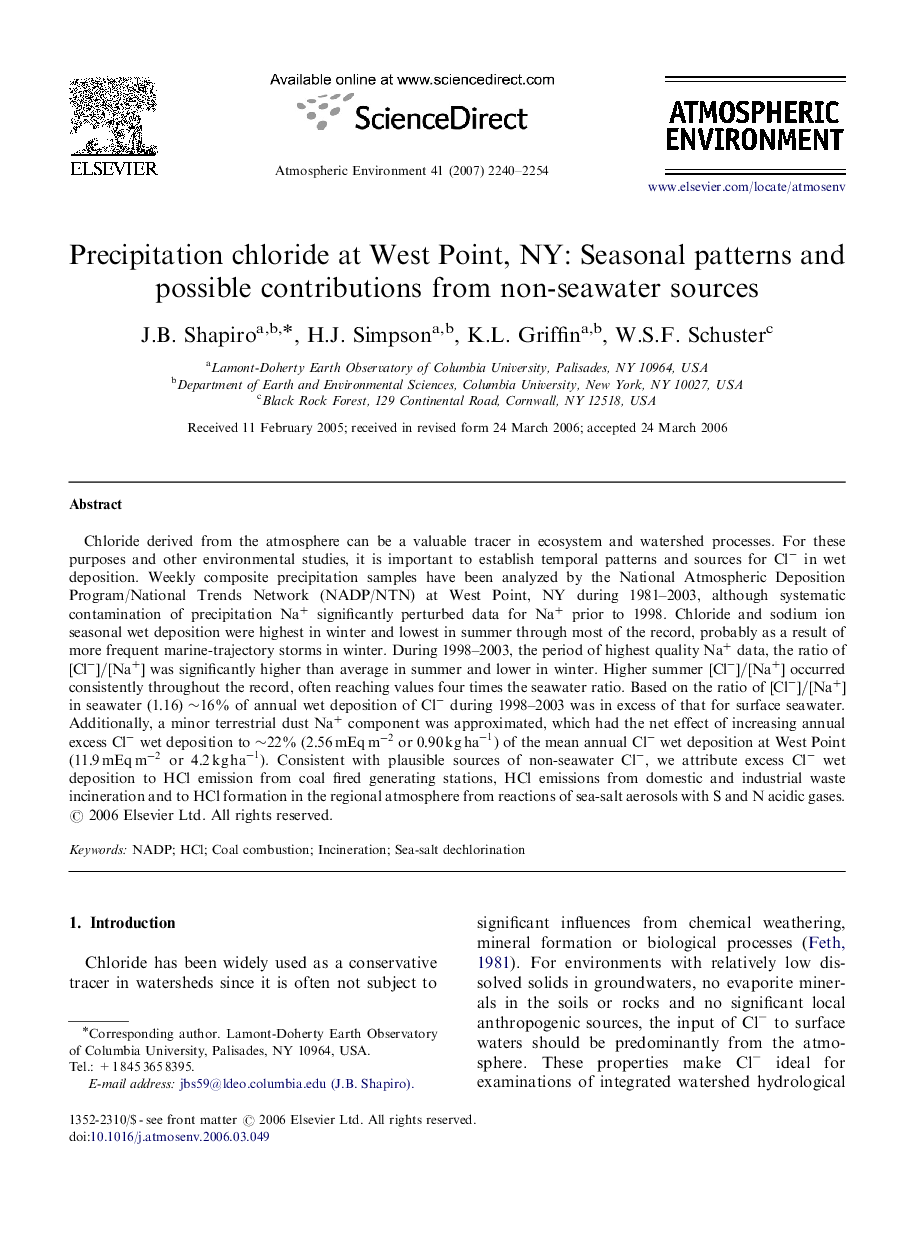| Article ID | Journal | Published Year | Pages | File Type |
|---|---|---|---|---|
| 4443484 | Atmospheric Environment | 2007 | 15 Pages |
Chloride derived from the atmosphere can be a valuable tracer in ecosystem and watershed processes. For these purposes and other environmental studies, it is important to establish temporal patterns and sources for Cl-Cl- in wet deposition. Weekly composite precipitation samples have been analyzed by the National Atmospheric Deposition Program/National Trends Network (NADP/NTN) at West Point, NY during 1981–2003, although systematic contamination of precipitation Na+Na+ significantly perturbed data for Na+Na+ prior to 1998. Chloride and sodium ion seasonal wet deposition were highest in winter and lowest in summer through most of the record, probably as a result of more frequent marine-trajectory storms in winter. During 1998–2003, the period of highest quality Na+Na+ data, the ratio of [Cl-]/[Na+][Cl-]/[Na+] was significantly higher than average in summer and lower in winter. Higher summer [Cl-]/[Na+][Cl-]/[Na+] occurred consistently throughout the record, often reaching values four times the seawater ratio. Based on the ratio of [Cl-]/[Na+][Cl-]/[Na+] in seawater (1.16)∼16% of annual wet deposition of Cl-Cl- during 1998–2003 was in excess of that for surface seawater. Additionally, a minor terrestrial dust Na+Na+ component was approximated, which had the net effect of increasing annual excess Cl-Cl- wet deposition to ∼22%∼22% (2.56mEqm-2 or 0.90kgha-1) of the mean annual Cl-Cl- wet deposition at West Point (11.9mEqm-2 or 4.2kgha-1). Consistent with plausible sources of non-seawater Cl-Cl-, we attribute excess Cl-Cl- wet deposition to HCl emission from coal fired generating stations, HCl emissions from domestic and industrial waste incineration and to HCl formation in the regional atmosphere from reactions of sea-salt aerosols with S and N acidic gases.
